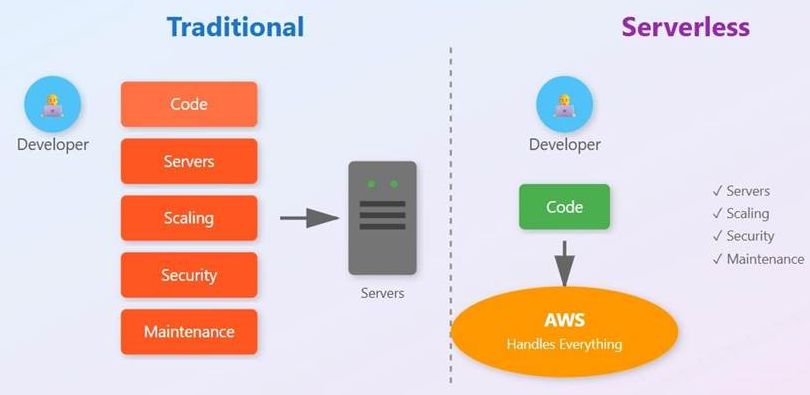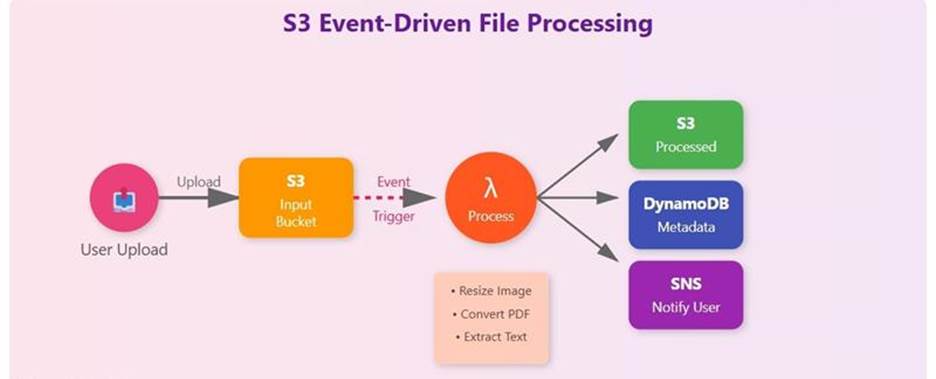What is Serverless
Despite its name, “serverless” doesn’t mean there are no servers. Instead, it means you don’t have to manage, provision, or think about servers. AWS handles all the infrastructure, letting you focus purely on your code and business logic.

Why Go Serverless
- No Server Management: AWS handles all the patching, scaling, and maintenance. You never SSH into a server again.
- Automatic Scaling: Your application automatically scales from zero to millions of requests without any configuration.
- Pay Per Use: You only pay for what you use, down to the millisecond. No idle resources are burning money.
- Faster Time to Market: Deploy features in hours instead of weeks by eliminating infrastructure concerns.
- Built-In High Availability & Security: Serverless services are designed with redundancy and security best practices by default, so your applications are resilient to failures and protected without extra effort.
Core AWS Serverless Services
AWS Lambda - The Compute Engine
Lambda runs your code in response to events. Each function is a small, focused piece of code that does one thing well.

Example Lambda Use Cases:
- Processing uploaded images (resize, compress, watermark)
- Responding to API requests
- Processing streaming data
- Running scheduled tasks
AWS S3 - The Storage Layer
Amazon S3 (Simple Storage Service) is a highly durable object storage service that can securely store any type of file, from images and videos to logs and backups. It can also trigger AWS Lambda functions automatically whenever new objects are uploaded or modified, enabling event-driven workflows and making it an ideal component for building serverless architectures.

AWS Serverless Use Cases
- Image & Document Processing S3 + Lambda:
- Upload to S3 triggers Lambda to resize images, and save results (e.g., in DynamoDB). Optionally send an SNS notification.
- When to use: user uploads or back‑office imports that need fast, automatic processing without running servers.
- Public APIs & Mobile Backends API Gateway + Lambda:
- Build REST endpoints with authentication; cache with CloudFront.
- When to use: lightweight APIs, MVPs, or spiky traffic where you don’t want to manage EC2/EKS.
- Background Jobs & Queues SQS + Lambda:
- Offload slow or retryable work. Lambda processes messages at your pace; use a Dead‑Letter Queue for failures.
- When to use: email sends, PDF generation, webhook processing, or any task that can run asynchronously.
- Scheduled Tasks EventBridge Scheduler + Lambda:
- Cron‑like jobs for housekeeping, reports, and backups.
- When to use: nightly cleanups, hourly syncs, health checks, and periodic reports.



